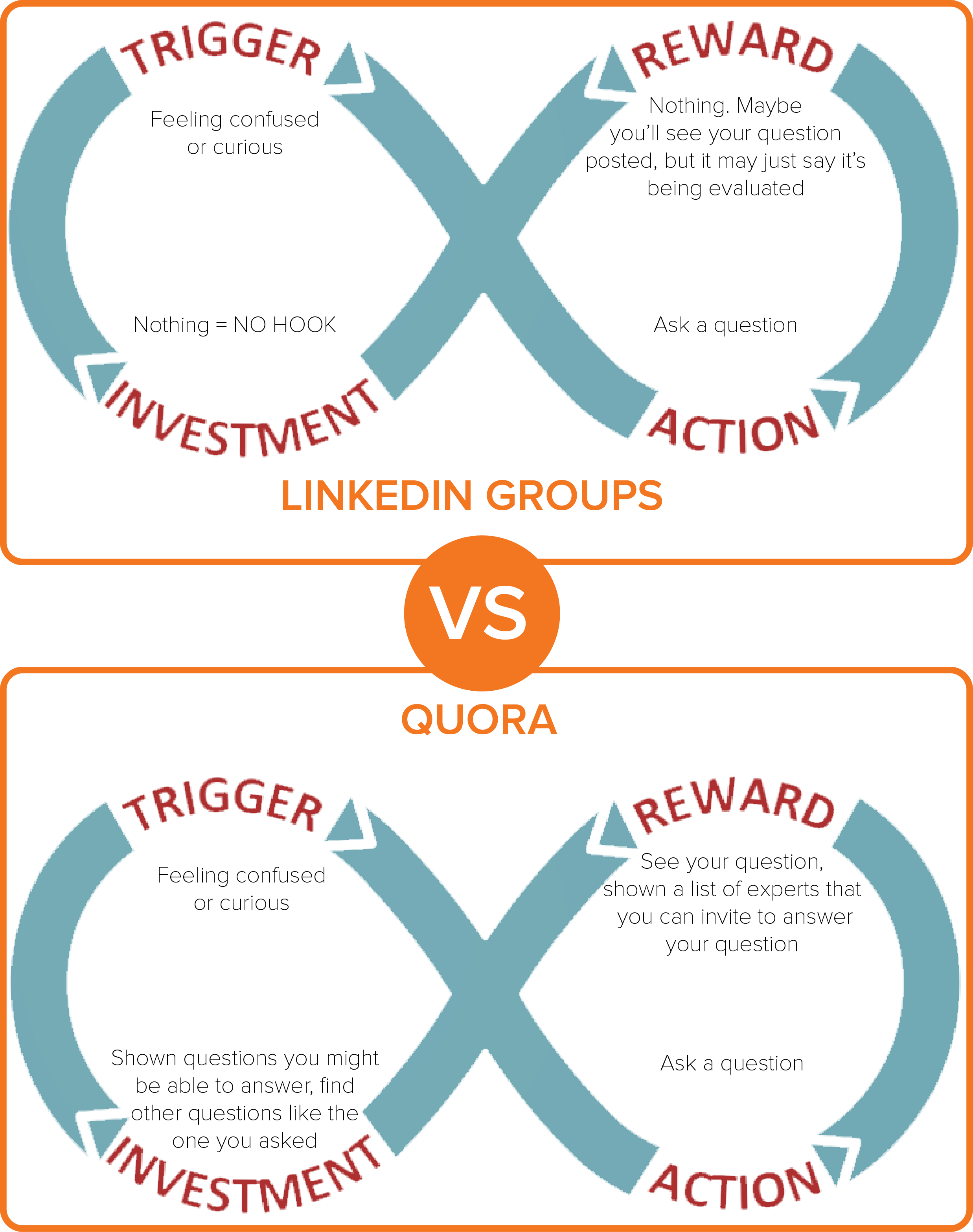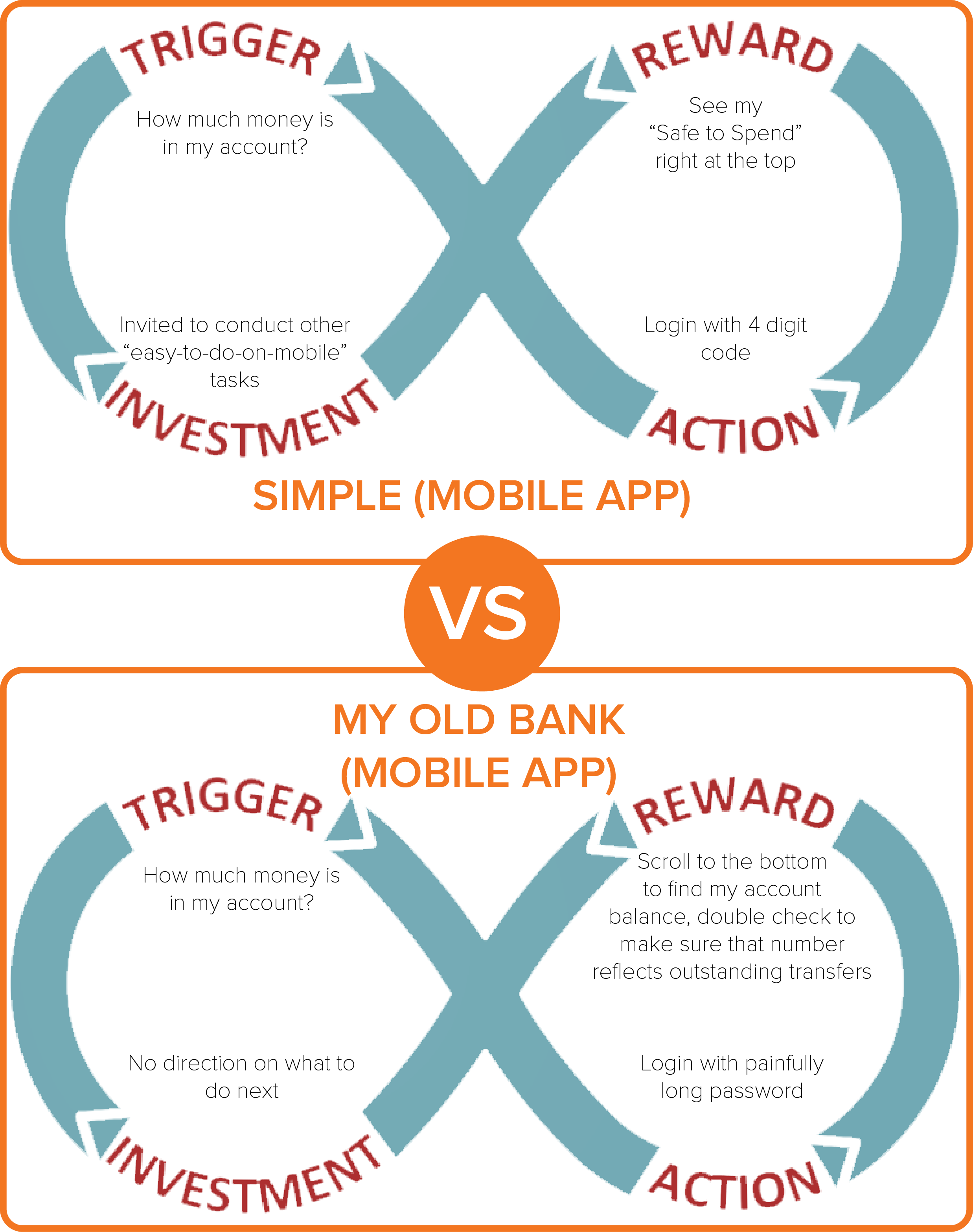Facebook, Twitter, YouTube, Netflix, Instagram – companies that changed the habits of millions of people. How did they do it?
Last week Nir Eyal, author of Hooked: How to Build Habit Forming Products, joined us on a webinar to talk about his research and help us understand how these companies developed products that so effectively changed user behavior.
Nir started by outlining just how customer habits improve business performance:
- Habits increase customer lifetime value
- Habits provide greater pricing flexibility
- Habits supercharge growth. “Hooked” users don’t churn
- Habits improve a business’s defensibility. It’s hard to get someone to stop using a product that they use without thinking
Nir is quick to point out that not all businesses should be seeking to form habits. First, habits are hard to form. Second, plenty of businesses can be successful without using habits. Third, there is a bit of a “dark art” aspect to this kind of thinking. Habits change people and there are some moral implications to creating the next cigarette company, even if that “cigarette” is just an app.
I won’t summarize the whole event, you should watch it for yourself. Here’s what some of our attendees said:
Getting a crash course in neuroscience, cognitive learning, product design, etc. Wow, the interwebs is awesome! #getthemhooked
— Shervin Talieh (@calitalieh) January 30, 2014
#getthemhooked Great seminar will be picking up the book. The Power of Habit is another great book on this so those looking for more.
— FranCulture Magazine (@FranCulture) January 30, 2014
@rjmetrics @nireyal @robertjmoore Seriously one of the most value webinars I've ever attended #GetThemHooked thx!
— Joe Magee (@KJMagee) January 30, 2014
Instead, I wanted to try my hand at finding and evaluating products and services based on how well they “hook” people. Even if you’re not building the next Twitter, there are elements of the Hooked model that can improve any product development process.
LinkedIn Groups vs. Quora
Nir Eyal explained that there are two kinds of triggers – internal and external. Internal triggers are emotional: we feel bored so we look at YouTube, we want to save the moment so we snap an Instagram picture.
LinkedIn and Quora both share the same internal triggers – people use their services to connect with other professionals, share their expertise, or get their questions answered. So, let’s see how well the two services hook users who are looking for an answer:

It’s easy to see how Quora builds the “hook” into the Q&A process. They take it even further by using notifications and “you may also know” features to make it easy to build your Q&A community.
To be fair, LinkedIn is superb at other kinds of hooks. Connecting with someone after meeting them has become a habit for many professionals. Here’s how the hook plays out:

What makes this such a great hook is that each new connection improves the likelihood that the person will return to add more connections. Nir calls these types of actions “pearls.” The actions layer over time, becoming more valuable with each action.
Simple Bank vs. My Old Bank (I won’t name names)
Nir points out that the most expensive part of the build, measure, learn process (aka The Lean Startup methodology) is the build part. Post-build companies need to be measuring and learning better, pre-build they should be thinking about how to integrate hooks. As he explained this, I couldn’t help but think about my bank.
I recently switched to Simple Bank. One of the things I love most about Simple is their mobile app. It’s designed around one premise – the reason people login into their bank accounts most often is to see how much money is their account (internal trigger). What my old bank got wrong, that Simple gets right, is how to use this trigger to form a habit.
With our without Simple I’ll check my account balance, but every time I do that Simple shows me other things I can easily do on the mobile app. Because they ask for that “investment,” I now regularly use the app to transfer money, make deposits, and find nearby ATMS. I’m hooked.

Wrapping Up
One of my favorite examples from Nir’s talk was Instagram vs. Kodak. Kodak spent years and an enormous amount of money forming a habit. They taught people what the “Kodak Moment” was so seeing the Kodak Moment was a trigger that said “use this product.” Compare that to Instagram. The simple fact that a tech interface allows users to see, share, and like instagrams has made the refrain “Instagram that!” ubiquitous in just a few short years. Instagram users know what the Instagram moment looks like.
You might not be building Instagram, or Twitter, or LinkedIn. You may not need habit forming products to be successful, but the lessons that Nir Eyal learned from years of researching these companies can teach us all a few important lessons about more effective product development.
